Top Mill (also known as Castle Mill)
|
Linby Castle Mill (originally known as Top Mill) and its reservoir – Papplewick dam – were constructed by George Robinson in about 1782. They were built to the west of Papplewick Village, along the edge of Linby Lane. Conservation of the reservoir site is now part of the Moor Pond Woods Project. |
|
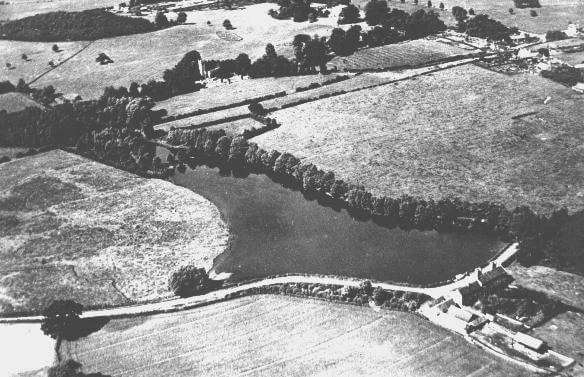 |
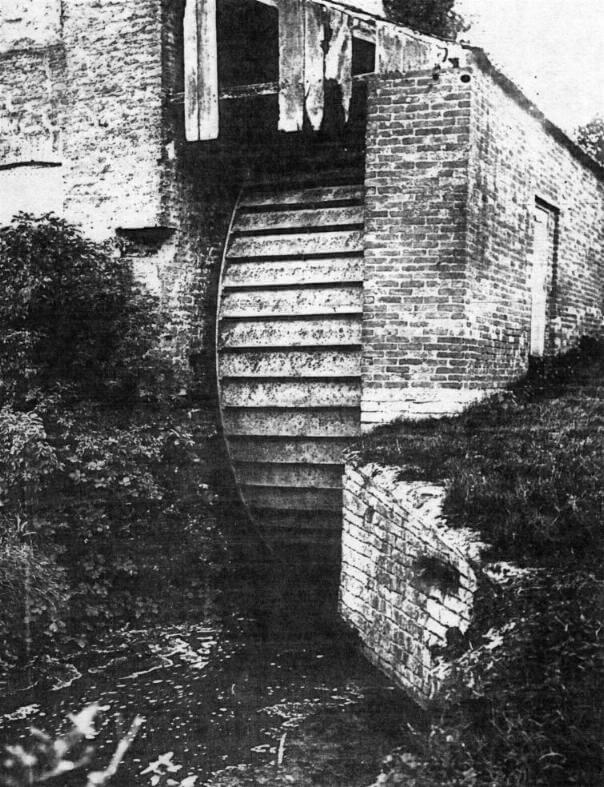 |
| This aerial photograph shows Papplewick Dam, and Top Mill (Castle Mill) from the southwest. Linby Lane crosses the dam, and winds in front of the building. This was altered in 1946 when the dam was drained.North of the main dam is a small triangular pond which was used to trap silt from the river. This still remains, and can be reached by following a footpath north from the Linby Lane lay-by. | The mill was built by the Robinson family in about 1782. After the cotton mills closed in the 1820s, this mill was converted for use as a corn-mill.The water wheel at Top Mill was a breast-shot wheel attached to the east end of the building. This photograph shows the wheel in the late 1940s just before it was removed. |
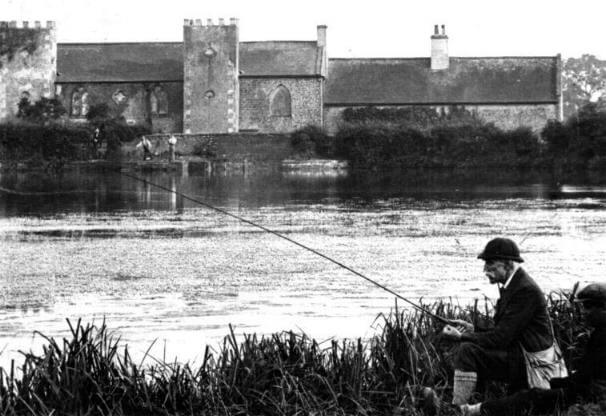 |
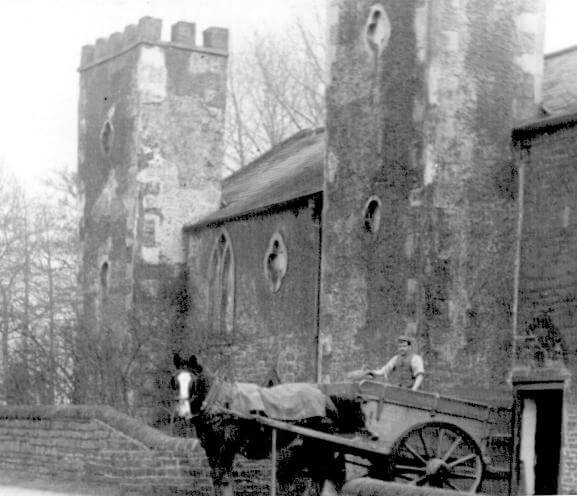 |
| This is a picture of the north facade of the building. The ornate front of the building is its original form, and the ornamentation reflects stonework still seen today at Grange farm. Linby lane used to run across the dam in front of the building. The R. Leen flows under the the building, and the water wheel was sited at the east (left) side of the building. |
This photograph was taken around 1910. It shows the front of the mill building in more detail. Does anybody know who the carter is ? Contact us, and let us know. |
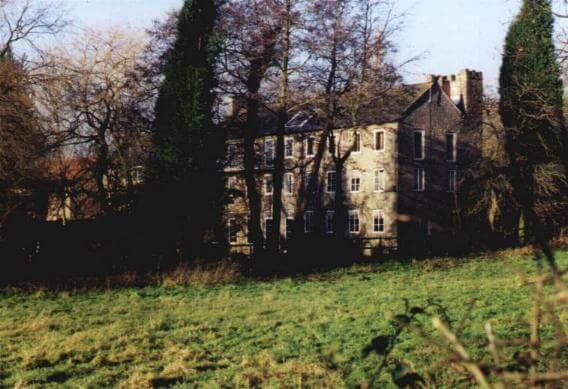 |
|
| The rear (south) of the building looks much more like a three storey mill. This view was taken in 2000. The building was restored between 1954 and 1962, gaining a Civic Trust Award for the work. It has been converted into residential use. | |


